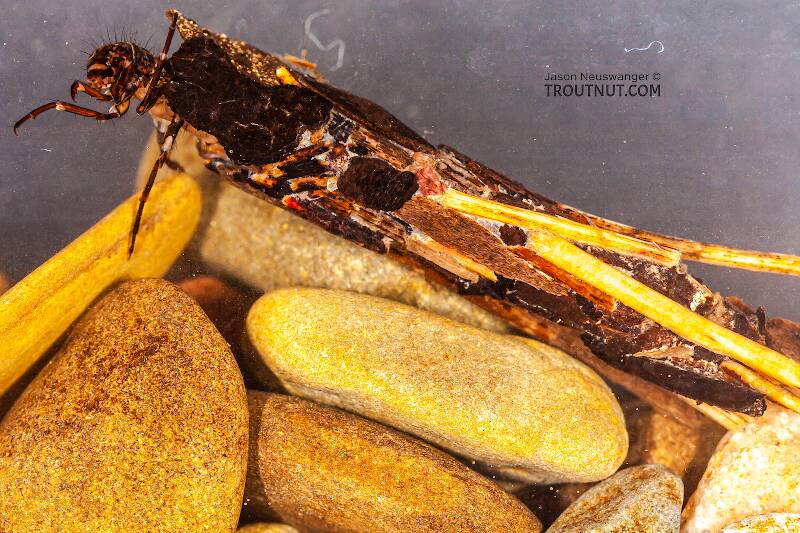
Blue-winged Olives
Baetis
Tiny Baetis mayflies are perhaps the most commonly encountered and imitated by anglers on all American trout streams due to their great abundance, widespread distribution, and trout-friendly emergence habits.
Featured on the forum

This specimen keys to the Epeorus albertae group of species. Of the five species in that group, the two known in Washington state are Epeorus albertae and Epeorus dulciana. Of the two, albertae has been collected in vastly more locations in Washington than dulciana, suggesting it is far more common. On that basis alone I'm tentatively putting this nymph in albertae, with the large caveat that there's no real information to rule out dulciana.

Troutnut is a project started in 2003 by salmonid ecologist Jason "Troutnut" Neuswanger to help anglers and
fly tyers unabashedly embrace the entomological side of the sport. Learn more about Troutnut or
support the project for an enhanced experience here.
Caddisfly Genus Pycnopsyche (Great Autumn Brown Sedges)
Genus Range
Egg-Laying behavior
Time of day: Nighttime; sometimes dusk or early morning
Larva & pupa biology
Diet: Decaying leaves
Shelter type: Twigs arranged lengthwise
Their life cycle is completely synchronized with this food source -- the eggs hatch in the fall, just as the deciduous trees are shedding their foliage; the larvae feed and grow throughout the winter and spring, until early summer when the high water flushes away the accumulations of decaying leaves; the larvae enter diapause, a quiescent period, sealing off their cases, once their food source is diminished; they remain in this inactive state until they pupate in late summer; emergence, mating, and egg laying occurs in early fall, producing a new generation in time for the next input of leaves.
Specimens of the Caddisfly Genus Pycnopsyche
3 Larvae
Discussions of Pycnopsyche
Great Autumn Brown Sedges on Potomac River
3 replies
Posted by BrettB on Oct 2, 2008
Last reply on Oct 3, 2008 by GONZO
Came in to work today and noted several large Autumn sedges on doors facing river(18mm wing-to-head and 34mm total w/ antennae). Though more brownish-rusty than I remember them being, I'm relatively certain it is a Pycnopsyche due to the size, timing and dark markings near the rear mid-wing (sort of looks like a yin-yang symbol). Does anyone know of a good emerger fly for this hatch? I'm assuming it emerges in the evening through early morning. I may tie up some size 8 rusty elk hair caddis for adult imitations. Big bugs!
Start a Discussion of Pycnopsyche
References
- LaFontaine, Gary. 1981. Caddisflies. The Lyons Press.
- Swisher, Doug and Carl Richards. 2000. Selective Trout. The Lyons Press.
Caddisfly Genus Pycnopsyche (Great Autumn Brown Sedges)
Taxonomy
14 species (Pycnopsyche aglonus, Pycnopsyche antica, Pycnopsyche circularis, Pycnopsyche conspersa, Pycnopsyche divergens, Pycnopsyche flavata, Pycnopsyche gentilis, Pycnopsyche indiana, Pycnopsyche limbatus, Pycnopsyche luculentus, Pycnopsyche rossi, Pycnopsyche sonso, Pycnopsyche subfasciata, and Pycnopsyche virginica) aren't included.




